The ASRock X370 Gaming-ITX/ac Motherboard Review
by Gavin Bonshor on April 18, 2018 8:00 AM EST- Posted in
- Motherboards
- Gaming
- AMD
- ASRock
- Mini ITX
- ITX
- AM4
- Ryzen
- X370
- X370 Gaming-ITX/ac
Board Features
The X370 Gaming-ITX/ac has a wide variety of high-end features including a USB 3.0 Type-C port on the rear panel, a Realtek ALC1220 audio codec, and Intel networking. The primary and only PCIe 3.0 x16 slot operates at its full specification, and the rear mounted PCIe 3.0 x4 M.2 slot doesn’t share bandwidth with anything else on board. The PCIe 3.0 x16 slot is reinforced with what ASRock call Steel Slot to minimize damage to the slot with a heavy graphics card installed.
| ASRock X370 Gaming-ITX/ac ITX Motherboard | |||
| Warranty Period | 2 Years | ||
| Product Page | Link | ||
| Price | $160 | ||
| Size | ITX | ||
| CPU Interface | AM4 | ||
| Chipset | AMD X370 | ||
| Memory Slots (DDR4) | Two DDR4 Supporting 32GB Dual Channel Up to DDR4-3466 |
||
| Video Outputs | Two HDMI 1.4b | ||
| Network Connectivity | Intel I211AT Gigabit LAN Intel 802.11ac Wi-Fi |
||
| Onboard Audio | Realtek ALC1220 | ||
| PCIe Slots for Graphics (from CPU) | 1 x PCIe 3.0 x16 | ||
| PCIe Slots for Other (from PCH) | N/A | ||
| Onboard SATA | Four, RAID 0/1/10 | ||
| Onboard M.2 | 1 x PCIe 3.0 x4, on Rear | ||
| USB 3.1 (10 Gbps) | N/A | ||
| USB 3.0 (5 Gbps) | 1 x Type-C Rear Panel 1 x Type-A Rear Panel 2 x Type-A Rear Panel 2 x Header |
||
| USB 2.0 | 2 x Type-A Rear Panel 2 x Header |
||
| Power Connectors | 1 x 24-pin ATX 1 x 8pin CPU |
||
| Fan Headers | 1 x CPU (4-pin, PWM Only) 1 x System (4-pin, PWM & DC) 1 x System/Pump (4-pin) |
||
| IO Panel | 1 x USB 3.0 Type-C 3 x USB 3.0 Type-A 2 x USB 2.0 Type-A 1 x Network RJ-45 (Intel) 2 x HDMI 1.4b 1 x Combo PS/2 6 x 3.5mm Audio Jacks (Realtek) 1 x S/PDIF Output (Realtek) |
||
On paper, the X370 Gaming-ITX/ac looks very strong and has a lot of features you would expect from a mid-range to high-end X370 ATX offering. The only downfall to ITX other than lack of PCB real estate is the lack of physical multi-graphics card support through CrossFire and SLI.
Visual Inspection
While the X370 Gaming-ITX/ac conforms to the standards for the miniITX form factor (170 x 170mm), the all-black PCB is pretty stacked with circuitry, components and chips. The general theme of the board itself is all centered around gaming, with the red accented power delivery and chipset heatsinks signifying the 'Fatal1ty' branding. One massively neglected feature in comparison to a lot of other boards in the same price range and segment is built in RGB LEDs; the X370 Gaming-ITX/ac has no LED lighting built-in whatsoever, although a single RGB LED header has been included.
Due to limitations in sizing due to the miniITX form factor, only two DRAM slots have been included, but this very normal for a board considered small form factor. The DRAM slots support up to a maximum of 32GB (2 x 16GB) in capacity, with speeds up to DDR4-3466, which is higher than a lot of other AM4 socket motherboards, mainly due to the latest AGESA firmware updates.
In regards to controllers in addition to the X370 promontory chipset, ASRock has implemented a single Realtek ALC1220 audio codec which is complimented by a pairing of Nichicon gold audio capacitors and also features PCB isolation from the rest of the components and circuitry. The audio inputs associated include six 3.5mm audio jacks supporting up to 7.1 surround sound, with a single S/PDIF optical output. Also featured is the Intel I211AT network controller which is Gigabit compliant and powers the single LAN port on the rear panel. In addition to this, ASRock has included an Intel Wireless AC 2x2 Wi-Fi network card which slots into a specifically created expansion slot on the PCB.
The power delivery on the X370 Gaming-ITX/ac is rather substantial for a Mini-ITX offering in comparison to other AM4 socketed models and a clear emphasis on performance has been put onto this board by ASRock. The power delivery runs in a 6+2 configuration with three CPU phases being doubled up upon giving a total of three Intersil ISL6625A drivers and running a conventional 3+2 design; the two phases allocated for the SoC also feature individual ISL6625A drivers. Controlling the power delivery is a single Intersil ISL95712 PWM regulator and a wave of Sinopower SM7341EHKP MOSFETs can be found under the low-line metallic red heat sink. Finishing off the power delivery is total of eight chokes which is complimentary to the eight phases. Providing power to the CPU is an 8-pin 12V power connector, while a 24-pin ATX power connector is included for the motherboard.
The board has a fairly standard set of storage options available with a total of four straight angled SATA 6Gb/s ports with RAID 0/1 and 10 arrays being supported. Although the X370 chipset can support up to six SATA ports, obvious space penalties have applied due to the Mini-ITX form factor.
On the rear of the motherboard is a single PCIe 3.0 x4 M.2 slot with M.2 form factor drives of up to M key type 2280 being supported; this slot is NVMe capable and doesn’t share bandwidth from the primary full length PCIe 3.0 x16 slot.
The rear I/O is pretty standard for an ITX motherboard on the AM4 socket, although one major questionable inclusion is the dual HDMI 1.4b ports which are placed side by side. This takes up a considerable amount of the rear panel, which could be ascribed to more USB connectivity - in this case, it is likely that ASRock had a specific customer that needed two HDMI outputs.
USB connectivity coves in the form of two USB 2.0 Type-A ports, three USB 3.0 Type-A ports and a USB 3.0 Type-C port powered via an ASMedia ASM1543 re-driver. Finishing off the rear panel is a combo PS/2 port, a single RJ45 LAN port controlled by the Intel I211AT Gigabit controller, five 3.5mm gold plated audio jacks and S/PDIF output powered by the Realtek ALC1220 audio code,c and two antenna connects for the included Intel 802.11ac Wi-Fi adapter.
In the Box
While there isn't much of a bundle included with the ASRock X370 Gaming-ITX/ac, everything needed to get connected with hard drives or SSDs, as well as connected to a wireless network is included. We get the following:
- Driver Disk
- Quick Start & Software Guide
- M.2 Drive Mounting Screw
- Rear I/O Plate
- Two SATA Cables (One right angled and one straight)
- ASRock Postcard
- 2T2R 802.11ac Wi-Fi Antenna




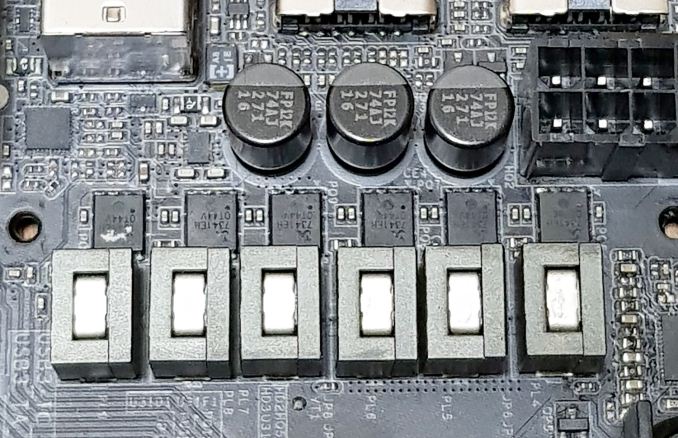
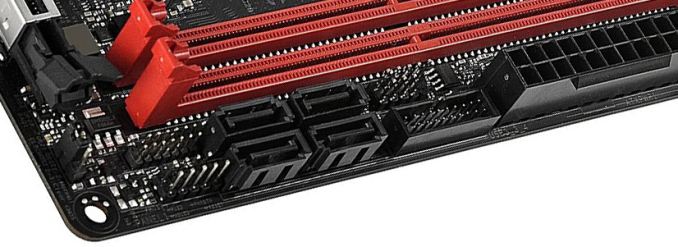
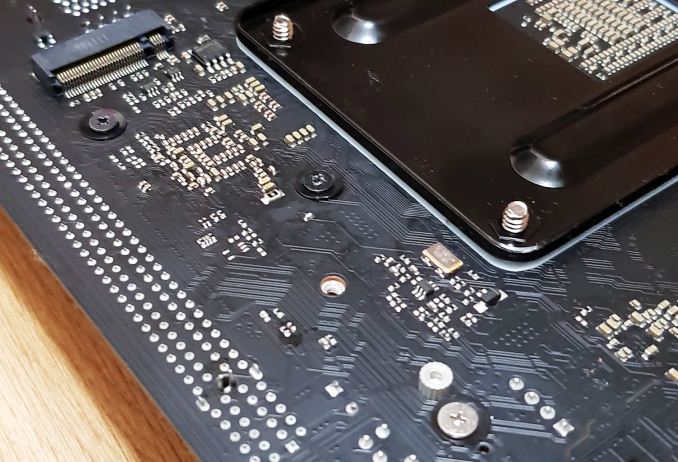
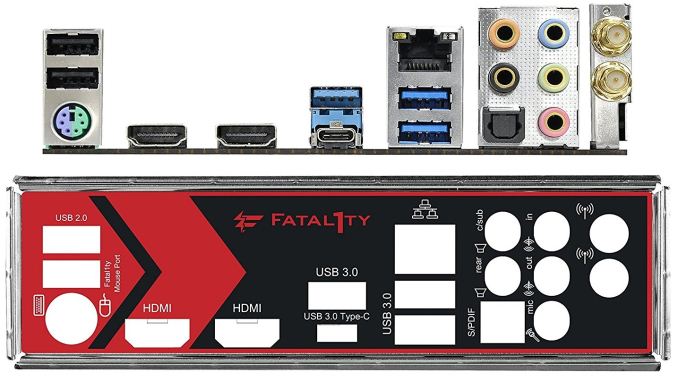
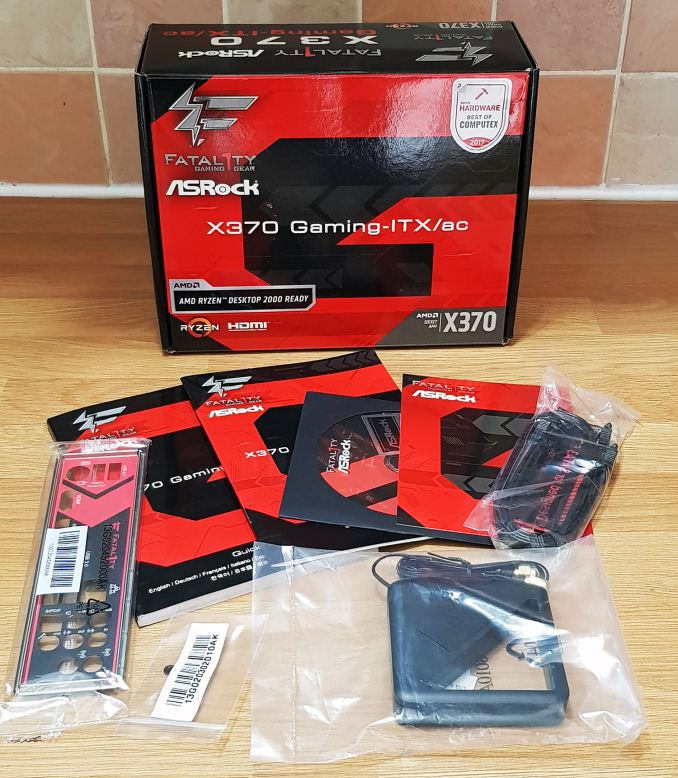








30 Comments
View All Comments
Daedalus685 - Wednesday, April 18, 2018 - link
I'm fairly certain you are correct. The board appears to have usb 3.1 (gen 1) ports only (formerly called USB 3.0), i.e. 5Gbps.The type C, and A ports are a different colour of blue, but all of the documentation refers to them as gen 1 ports.
gavbon - Wednesday, April 18, 2018 - link
Yeah, the board does lack USB 3.1 Gen2, it does make the B350 Gaming ITX-ac (B350 version of this board) seem like a great investment for a Mini-ITX system since you lose all the multi-GPU support benefits from X370 going small form factor.John_M - Saturday, April 28, 2018 - link
The renaming of USB 3.0 to USB 3.1 Gen 1 is a confusing mess and it only gets worse with USB 3.2. Just to emphasise, this board does _not_ have 10 Gb/s USB 3.1 Gen 2. Even the colour of the ports is misleading. Colour and the presence of a Type C socket is no guarantee of 10 Gb/s operation. It is limited to 5 Gb/s USB 3.1 Gen 1 (formerly known as USB 3.0).microking4u - Wednesday, April 18, 2018 - link
Having built a B350 myself, would love for you guys to test using an M.2 NVME SSD as your OS boot drive and running 2 SATA SSD drives in RAID 0 for DATA storage (No need to reply about reliability please) and see how smooth that goes and dry to update RAID drivers?I have had no issues with Intel 8th Gen ITX boards with this setup, but its a complete headache and reliability/perfomance issue with AMD!
The_Assimilator - Wednesday, April 18, 2018 - link
Wait, so the Biostar X370GTN gets called out for having a tiny heatsink, yet this board doesn't?Plus that board costs $50 less and has better I/O (4 rear USB 3.0 vs only 2 on this "high-end" offering). The only real sin the Biostar commits is using Realtek for networking, but at 50 less bucks, that's probably excusable.
Not to say the Biostar isn't without faults - going with Realtek networking is vomit-inducing - but
The_Assimilator - Wednesday, April 18, 2018 - link
One day, AnandTech will allow users to edit their comments. That day, is not this day.gavbon - Wednesday, April 18, 2018 - link
The heatsink might be small, but it's definitely more adequate than the one on the Biostar X370GTN. I actually sat at my desk today while doing some write-ups thinking to myself which has the worst VRM heatsink of the ITX boards on my desk...The Gigabyte AB350-Gaming Wi-Fi, X370GTN and the ASRock X370 Gaming-ITX/ac - I haven't yet concluded, although I do intend to find out for my own benefit as I want to build a small Ryzen 2200G system and quality is everything to me!!1_rick - Wednesday, April 18, 2018 - link
I have this board. It does have 4 USB 3.0 ports on the back (3 type A and 1 type C).1_rick - Wednesday, April 18, 2018 - link
I've got a 1600X running 3.95GHz @ (IIRC) 1.375V stably. I haven't gotten it to run at anything higher, but I haven't done much testing, either. It crashed almost immediately running Prime95 at that voltage and the next up (1.38 something) and by that time I was getting tired of the testing.For some reason, the ethernet port on the back of mine quit working, which is obviously annoying, although the wifi works. (I upgraded the antenna because the one that's included is a little bit fragile, I pulled on it too hard once, and disconnected the wire from the socket, so that's probably more my fault than ASRock's.)
gavbon - Wednesday, April 18, 2018 - link
You could have damaged the wiring, can you see any physical damage at all?